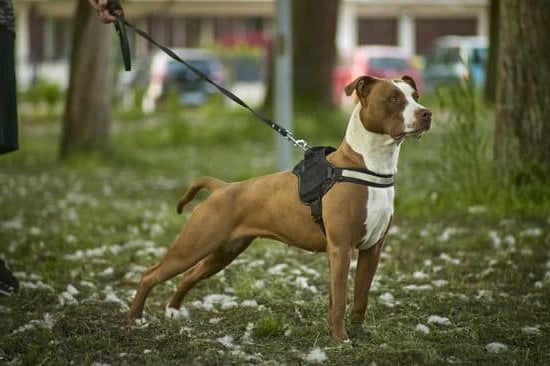Shared gaze dog training is a technique that has gained significant popularity in recent years as a powerful tool for effective communication and obedience training. This approach focuses on the importance of eye contact and shared focus between dogs and their owners, recognizing the innate ability of canines to interpret human gaze and respond to it. By understanding and utilizing shared gaze training, dog owners can enhance their bond with their furry friends and achieve desired behavioral outcomes.
Shared gaze dog training involves establishing a strong connection through eye contact and nonverbal cues. It emphasizes the role of eye contact in promoting attentiveness, focus, and understanding between dogs and their owners. By using shared gaze as a communication tool, trainers can effectively convey their expectations to their canine companions, helping them learn new commands or break unwanted behaviors.
The concept behind shared gaze dog training is firmly rooted in scientific research. Various studies have shown that dogs possess an exceptional ability to interpret human facial expressions, particularly through eye contact. Dogs are highly attuned to human gaze and use it as a means of communication themselves. This mutual understanding between humans and dogs forms the foundation of shared gaze dog training, allowing for meaningful interactions that lead to improved obedience and behavior.
The Science Behind Shared Gaze Dog Training
Shared gaze dog training is more than just a technique – it is rooted in science. Understanding the scientific basis of shared gaze can help dog owners grasp why this training method is so effective and how it can positively impact their furry friends. Research and studies have shown that dogs interpret and respond to shared gaze in unique ways.
One of the key factors behind shared gaze’s effectiveness lies in dogs’ ability to understand human attention and intentions through eye contact. Dogs are highly perceptive animals, and they instinctively pay attention to where others are looking. When a dog trainer or owner establishes eye contact with their dog during training, it enhances their communication and helps the dog focus on specific cues or commands.
Biologically, shared gaze has been linked to oxytocin release in both dogs and humans. Oxytocin, often referred to as the “love hormone,” plays a crucial role in social bonding between individuals. Studies have found that when dogs make eye contact with their human companions, oxytocin levels increase for both parties, fostering a deeper emotional connection and strengthening the bond between them.
Furthermore, shared gaze also taps into the psychology of learning and reinforcement. Dogs are attentive creatures by nature, but when they engage in shared gaze training with their owners, it heightens their focus and attentiveness even further. By maintaining eye contact with their dogs, trainers can capture their undivided attention and reward desired behaviors effectively through positive reinforcement.
Benefits of Shared Gaze Dog Training
Shared gaze dog training offers numerous benefits for both dogs and their owners. By incorporating shared gaze as a training technique, dog owners can experience improved focus and attentiveness from their pets. When dogs make eye contact with their owners, they become more receptive to commands and better able to understand what is expected of them. This results in more effective training sessions and quicker progress in behavior modification.
One of the key advantages of shared gaze training is how it strengthens the bond between a dog and its owner. Eye contact is an important form of communication for dogs, similar to humans. When a dog makes eye contact with its owner, it establishes a connection and shows trust and engagement. The act of sharing gazes creates a sense of mutual understanding and enhances the dog-owner relationship.
Studies have shown that shared gaze can also stimulate oxytocin release in both dogs and humans. Oxytocin, often referred to as the “love hormone,” promotes feelings of attachment and bonding. When dogs make eye contact with their owners during training, this release of oxytocin facilitates a positive association with the training experience, making learning more enjoyable for both parties involved.
In addition to improving focus and strengthening the bond between a dog and its owner, shared gaze training helps develop better impulse control in dogs. By maintaining eye contact with their owners, dogs learn patience and self-control as they await instructions or rewards. This skill is beneficial beyond just training sessions; it carries over into everyday situations where impulse control is essential, such as when encountering distractions or practicing good manners around other people or animals.
Overall, shared gaze dog training provides several advantages for both dogs and their owners: improved focus, stronger bonds, heightened engagement, enhanced impulse control, and increased enjoyment in the training process. By incorporating shared gaze techniques into their training routines, dog owners can create more rewarding experiences for both themselves and their canine companions.
| Benefits of Shared Gaze Dog Training |
|---|
| Improved focus and attentiveness from dogs |
| Strengthened bond between dog and owner |
| Promotes oxytocin release in both dogs and humans |
| Enhanced impulse control in dogs |
How to Get Started with Shared Gaze Dog Training
Shared gaze dog training is a powerful technique that can improve communication and strengthen the bond between dogs and their owners. If you’re interested in trying shared gaze training with your dog, here are some steps to get you started.
- Establish trust and build a positive relationship: Before starting shared gaze training, it’s important to establish trust and create a positive environment for your dog. Spend time bonding with your dog through activities like play, exercise, and positive reinforcement training. This will help your dog feel comfortable and confident with you as their trainer.
- Start with short sessions: Begin by introducing shared gaze in short training sessions. Find a quiet and distraction-free space where you can focus on each other. Make sure your dog is calm and relaxed before starting the session.
- Catch their attention: Use a treat or toy to catch your dog’s attention and hold it up near your eyes or face. This will naturally draw their gaze towards you. When they make eye contact, praise and reward them immediately. Repeat this process several times to reinforce the behavior.
- Gradually increase the duration: As your dog becomes more comfortable with shared gaze training, gradually increase the duration of the sessions. Start by holding eye contact for just a few seconds, then work your way up to longer periods of time.
- Incorporate cues and commands: Once your dog understands the concept of shared gaze, begin incorporating cues or commands into the training sessions. For example, you can use phrases like “Look at me” or “Watch me” before asking for eye contact. Consistency is key – always use the same cue or command for this behavior.
- Be patient and consistent: Shared gaze training takes time and patience, so be prepared for gradual progress rather than instant results. Stay consistent with your training routine and make sure to practice regularly to reinforce the behavior.
Remember, the goal of shared gaze training is to establish a strong connection and open lines of communication between you and your dog. Keep the sessions positive, rewarding, and enjoyable for both you and your furry friend. With time and practice, shared gaze training can help strengthen your bond with your dog and lead to better obedience and behavior.
Common Challenges and Solutions in Shared Gaze Dog Training
Addressing Distractions
One common challenge that dog owners may encounter during shared gaze dog training is dealing with distractions. Dogs are naturally curious creatures, and it can be difficult for them to maintain eye contact when there are other interesting sights or sounds around.
To address this challenge, it is important to start the training in a quiet and familiar environment where distractions can be minimized. Gradually, as your dog becomes more comfortable with shared gaze training, you can begin to introduce mild distractions and gradually increase their level of difficulty.
Another helpful tip for addressing distractions is to use high-value treats or rewards during training sessions. By using treats that your dog finds especially enticing, you can motivate them to stay focused on you despite any competing distractions. It is also recommended to keep training sessions short and frequent, rather than long and infrequent. This can help keep your dog engaged and prevent boredom or wandering attention.
Building Comfort and Trust
Some dogs may initially feel uncomfortable or anxious about prolonged eye contact, especially if they have had negative experiences in the past. In these cases, it is important to slowly build comfort and trust through positive reinforcement techniques. Start by rewarding your dog with treats and praise for brief moments of eye contact, gradually increasing the duration over time.
If your dog shows signs of fear or anxiety during shared gaze training, take a step back and reassess their comfort level. It may be necessary to seek the assistance of a professional dog trainer who specializes in positive reinforcement methods to help address any underlying issues.
Maintaining Consistency
Consistency is key in any type of dog training, including shared gaze training. One challenge that many dog owners face is maintaining consistency in their commands and expectations. Dogs thrive on routine and repetition, so it is crucial to establish clear guidelines and consistently reinforce them.
To overcome this challenge, it is recommended to establish a set of verbal and visual cues that indicate when you want your dog to focus on you. For example, using the phrase “look at me” accompanied by a hand gesture can serve as a consistent command for shared gaze training. Practice these cues regularly and reinforce them with rewards to ensure that your dog understands what is expected of them.
By addressing these common challenges in shared gaze dog training, you can ensure that your training sessions are effective and enjoyable for both you and your furry companion. Remember to be patient, persistent, and always celebrate small victories along the way. With time and practice, shared gaze training can help strengthen the bond between you and your dog and create a harmonious relationship built on trust and understanding.
Examples of Shared Gaze Dog Training Exercises
Shared gaze dog training exercises are a core component of this training technique, allowing dogs to learn and respond to their owner’s eye contact. These exercises help strengthen the bond between a dog and its owner while improving focus and attentiveness. Here are some examples of shared gaze dog training exercises that you can try with your furry friend:
- “Look at Me” Exercise: This exercise teaches dogs to make eye contact with their owners on command. Start by holding a treat in front of your face to get your dog’s attention. Once you have their attention, say “look at me” and reward them with the treat when they make eye contact. Repeat this exercise multiple times, gradually increasing the duration of eye contact before giving the treat.
- “Watch and Wait” Exercise: This exercise helps improve impulse control and patience in dogs. Hold a treat in one hand and make a fist around it. Extend your arm out in front of you, palm facing up, and say “watch and wait.” Maintain eye contact with your dog while they resist the temptation to take the treat. Reward them after a few seconds of self-control by opening your hand and letting them have the treat.
- “Follow My Eye” Exercise: This exercise teaches dogs to follow the direction of their owner’s gaze. With your dog on a leash, hold a treat in one hand and point towards an object or person in the distance with your other hand. Say “follow my eye” as you turn your head towards the desired target.
Encourage your dog to look in the same direction as you by using verbal praise or another cue word like “look.” Reward them when they turn their gaze towards the target.
It is important to note that while these examples provide a starting point for shared gaze training exercises, they can be customized to suit different breeds and personalities. It is crucial to consider each individual dog’s needs and abilities when designing shared gaze training sessions. Additionally, consistency and positive reinforcement are key to achieving success in shared gaze training exercises.
Remember, the goal of shared gaze dog training exercises is to establish clear communication and strengthen the bond between you and your dog. As you practice these exercises, observe and celebrate small progressions in your dog’s ability to maintain eye contact and respond to your cues. With time and patience, shared gaze training can transform your relationship with your four-legged companion.
Success Stories
Transforming Aggression through Shared Gaze Training
One of the most remarkable success stories in shared gaze dog training is the case of Max, a German Shepherd with severe aggression issues. Max’s owner, Sarah, was desperate to find a solution to his aggressive behavior towards other dogs and strangers. After hearing about shared gaze training, Sarah decided to give it a try as a last resort before considering rehoming Max.
Sarah started by implementing simple shared gaze exercises with Max, such as the “Look at Me” command. She would wait for him to make eye contact and then reward him with treats and praise. Over time, this exercise helped improve Max’s focus and attentiveness towards his owner. As their bond grew stronger through shared gaze training sessions, Sarah noticed significant changes in Max’s behavior.
With continued practice and patience, Sarah was able to introduce Max to other dogs while maintaining eye contact with him. Through consistent use of shared gaze techniques, she observed that Max became less reactive and more responsive to her commands even in highly stimulating environments. Today, Max can walk calmly on a leash past other dogs without displaying any aggression-an incredible transformation that Sarah attributes to the power of shared gaze training.
Overcoming Fear and Anxiety
Another heartwarming success story involves Lucy, a rescued mixed breed who suffered from extreme fear and anxiety after being mistreated by her previous owner. Lucy was terrified of loud noises, unfamiliar surroundings, and meeting new people.
Lucy’s new owner, Michael, decided to try shared gaze training as part of her rehabilitation process. He would sit with Lucy in a quiet room and softly call her name until she made eye contact with him. When she did so willingly, Michael would reward her with treats or playtime with her favorite toys. This simple exercise helped build trust between them and gradually decreased Lucy’s anxiety.
Through shared gaze training sessions conducted in various environments, including outdoor spaces and social settings, Lucy’s confidence grew. She became less anxious and fearful, even when faced with challenging situations. Michael credits shared gaze training for transforming Lucy’s life by helping her overcome her fears and become a happier, more well-adjusted dog.
Enhancing Obedience and Off-Leash Reliability
Shared gaze dog training can also be highly effective in achieving off-leash reliability and enhancing obedience commands. Such was the case with Jackson, an energetic Border Collie who had a tendency to get easily distracted during training sessions.
Jackson’s owner, Lisa, incorporated shared gaze into their training routine to improve his focus and attentiveness. She started by teaching him the “Watch and Wait” command, where she would make eye contact with him before releasing him to fetch a toy or start an activity. Through consistent practice of this exercise, Jackson learned to wait for his owner’s signal instead of impulsively acting on his own desires.
Over time, shared gaze exercises helped Jackson become more responsive to other obedience commands as well. By establishing clear communication through eye contact, Lisa was able to achieve off-leash reliability with Jackson, allowing him greater freedom during walks and outdoor activities without compromising safety or control.
These success stories serve as powerful testimonials to the effectiveness of shared gaze dog training. The cases of Max, Lucy, and Jackson highlight the transformative potential that shared gaze can have on dogs’ behavior and overall well-being. By implementing this training technique with patience and consistency, dog owners can truly unlock their pets’ full potential and strengthen the bond between them.
Combining Shared Gaze Training with Other Dog Training Techniques
Shared gaze training is a powerful tool in the world of dog training, but it can be even more effective when combined with other training techniques. By integrating shared gaze training with positive reinforcement or clicker training, dog owners can create a comprehensive and well-rounded training plan for their furry friends.
Positive reinforcement is a widely used dog training technique that involves rewarding desired behaviors to encourage their repetition. When combined with shared gaze training, positive reinforcement can reinforce the importance of eye contact and communication during training sessions.
For example, when teaching a dog to sit using shared gaze, the owner can pair the command with a verbal cue and reward the dog with treats or praise when they make eye contact and respond correctly. This combination of shared gaze and positive reinforcement creates a clear link between the behavior and reward, helping the dog understand what is expected of them.
Clicker training is another popular method that uses a distinct sound (usually from a handheld device) to mark desired behaviors followed by a reward. When clicker training is combined with shared gaze, it helps reinforce the importance of eye contact as an indication that the desired behavior has been achieved.
For instance, if an owner is using the “watch me” command during shared gaze training, they can use the clicker to mark and reward moments when their dog makes direct eye contact. The click acts as an immediate marker to signal that the dog has successfully performed the behavior, making it clearer for them to understand what they are being praised for.
When combining shared gaze training with other techniques like positive reinforcement or clicker training, it’s important to keep in mind that consistency and patience are key. Each technique should be practiced separately at first before gradually introducing them together so as not to overwhelm your pup. With time and practice, this integrated approach will help strengthen your bond with your dog while also promoting their obedience and attentiveness.
| Training Technique | Description |
|---|---|
| Positive Reinforcement | A training technique that rewards desired behaviors to encourage their repetition. |
| Clicker Training | A method that uses a distinct sound to mark desired behaviors followed by a reward. |
Conclusion
In conclusion, shared gaze dog training offers a unique and effective approach to training our furry companions. Through the power of eye contact and communication, this training technique has gained popularity in recent years for its ability to improve focus, attentiveness, and strengthen the bond between dogs and their owners.
The science behind shared gaze dog training is intriguing. Research and studies have shown that dogs interpret and respond to shared gaze in a biological and psychological manner. By establishing eye contact with our dogs, we can establish a clear line of communication that they understand and respond to. This demonstrates the importance of understanding how our canine friends perceive and interpret our actions.
One of the key benefits of shared gaze dog training is its ability to enhance focus and attentiveness in dogs. By using eye contact as a means of communication, we can capture and maintain our dogs’ attention during training sessions.
As a result, they become more receptive to learning and are better able to understand what is expected of them. Additionally, shared gaze training can strengthen the bond between dogs and their owners by establishing trust, improving non-verbal communication, and fostering a deeper connection.
To get started with shared gaze dog training, it is important to initiate training sessions with simple exercises such as “Look at Me” or “Watch and Wait.” These exercises can be adapted to suit different breeds and personalities by gradually increasing the duration or difficulty level. It is also helpful to incorporate positive reinforcement techniques such as treats or praise to reward desired behaviors during shared gaze training.
Though there may be challenges along the way, overcoming these obstacles is part of the learning process for both you and your dog. By addressing potential challenges head-on with patience, consistency, and positive reinforcement techniques, success is within reach.
In summary, embracing the power of shared gaze dog training can lead to positive outcomes for both you and your furry friend. By understanding the concept of shared gaze dog training, exploring the science behind it, and harnessing its benefits, you can build a strong foundation of communication and trust with your dog.
So, why not give shared gaze training a try? Experience the power of this technique firsthand and witness the remarkable progress it can bring to your relationship with your canine companion.
Frequently Asked Questions
What are the three styles of dog training?
The three styles of dog training are positive reinforcement, dominance-based training, and aversive-based training. Positive reinforcement focuses on rewarding desired behaviors to encourage them to be repeated. This can include treats, praise, or toys as rewards. Dominance-based training involves establishing a hierarchy where the owner is the alpha figure and the dog must submit to their authority.
It often relies on techniques like alpha rolls or leash corrections. Aversive-based training uses punishment or negative stimuli to discourage undesirable behavior. This may include techniques such as choke chains or shock collars.
Can dogs follow human gaze?
Yes, dogs can follow human gaze. Studies have shown that dogs pay attention to human eye-gaze cues and use this information to understand what humans are looking at or pointing towards.
They can often interpret our intentions and respond accordingly. Dogs have evolved alongside humans for thousands of years, developing an incredible ability to read human social cues, including gaze direction.
Does staring at a dog show dominance?
Staring at a dog does not necessarily show dominance. In canine communication, prolonged direct eye contact can be perceived as a threat or aggression by some dogs.
However, dominance in dog behavior is not solely determined by staring but rather by a combination of body language and assertiveness exhibited by an individual throughout various interactions with other dogs or humans. A confident posture, control over resources, and display of consistent boundaries can also be indications of dominance in dogs rather than just maintaining eye contact alone.

Welcome to the blog! I am a professional dog trainer and have been working with dogs for many years. In this blog, I will be discussing various topics related to dog training, including tips, tricks, and advice. I hope you find this information helpful and informative. Thanks for reading!





